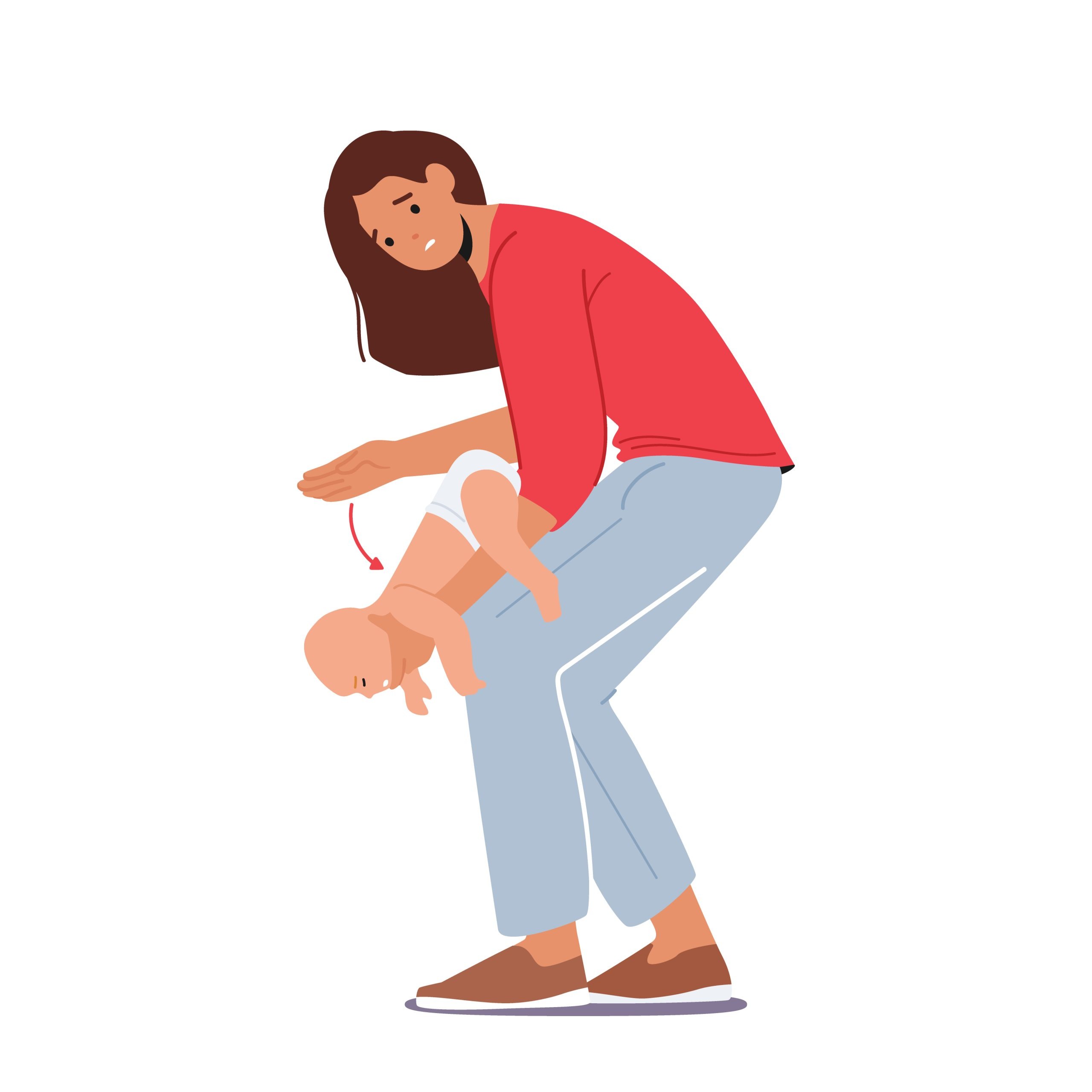Obstruction of the airways by a foreign body in children often occurs. It usually happens during feeding or play. Suspect airway obstruction if you witness the event or if symptoms such as coughing, choking or vomiting suddenly appear.
In such a situation, it is best to encourage the child to cough because a spontaneous and effective cough is usually more effective than any procedure. Therefore, if the child can cough, talk, cry or take a breath before coughing, you should encourage the child to cough to expel the foreign body. The child should be constantly monitored and monitored to prevent the condition from worsening.
If the cough is ineffective, you should suspect severe airway obstruction. The child cannot speak, cough, cry, becomes cyanotic (blue in color) and experiences a reduced level of consciousness. In this case, assess the child’s consciousness and call for emergency medical help.
Procedures to follow include back blows between the shoulder blades in infants and chest compressions. In both procedures, the hand supporting the child should also maintain an open airway by using the thumb and forefinger to hold the bony part of the lower jaw.
If the child is conscious, but the cough is not effective, you should apply blows to the back between the shoulder blades. They are hit on the back up to five times, and after each hit, briefly check whether the foreign body has been thrown out. The goal is not to perform all five strokes, but to remove the foreign body that is causing the airway obstruction.
If the foreign body is not dislodged after back blows, continue with chest compressions for infants and abdominal compressions (Heimlich maneuver) for children older than one year. Remember that for children under one year of age, you should perform chest compressions instead of the Heimlich maneuver. These chest compressions must be stronger, more forceful, and more widely spaced to ensure the removal of the foreign body. The hand position for chest compressions is the same as when performing chest compressions during resuscitation. You determine the position by following the skeletal rib cage to the process of the xiphoid lobe where the ribs meet the sternum, and place your index and middle fingers on that spot to apply pressure to the sternum.
Chest compressions or abdominal compressions are performed up to five times, checking for foreign body removal after each compression.
Combine back blows and pressure until the foreign body is dislodged or the child is conscious.
If the older child is standing, approach him from behind, put your arms around him and apply the Heimlich maneuver. The hand position is midway between the baby’s umbilical region and the xiphoid process of the sternum, where you place the hand. Grasp the fist with the other hand and apply inward and upward pressure up to five times. After each pressure, check the removal of the foreign body.
Regardless of whether the foreign body has been removed, it is recommended that the child be examined in hospital and receive further care if necessary.
If the foreign body is not removed and the child loses consciousness, open and examine the airway. If the foreign body is visible, carefully remove it from the mouth. If not visible, proceed with basic pediatric resuscitation procedures.



0 Comments